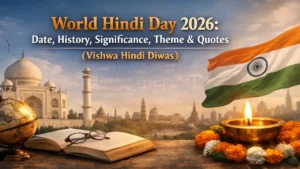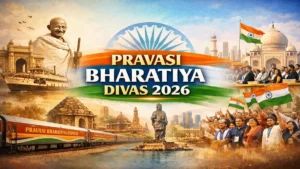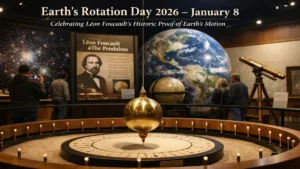Hindi Diwas, observed annually on September 14th, stands as a testament to India’s rich linguistic diversity and cultural heritage. This day marks the adoption of Hindi as an official language of the Indian federal government, a decision made by the Constituent Assembly in 1949. As we approach Hindi Diwas 2024, it’s crucial to reflect on the significance of this celebration, its historical roots, and its contemporary relevance in promoting linguistic unity across the nation.
Historical Background
The Genesis of Hindi Diwas
The roots of Hindi Diwas can be traced back to a pivotal moment in India’s post-independence era. On September 14, 1949, the Constituent Assembly of India made a landmark decision to adopt Hindi, written in the Devanagari script, as one of the official languages of the newly independent nation. This decision was not merely administrative but carried profound cultural and political implications.
Jawaharlal Nehru, India’s first Prime Minister, recognized the importance of this decision and proposed the observance of September 14th as Hindi Diwas. This date also coincides with the birth anniversary of Beohar Rajendra Simha, a renowned Hindi scholar and poet who played a significant role in advocating for Hindi’s official status.
Constitutional Recognition
The Indian Constitution, which came into effect on January 26, 1950, formalized the status of Hindi. Article 343 (1) of the Constitution explicitly states that “the official language of the Union shall be Hindi in Devanagari script.” However, recognizing India’s linguistic diversity, the Constitution also allowed for the continued use of English in official matters.
Early Celebrations and Evolution
The first official celebration of Hindi Diwas took place on September 14, 1953. Since then, it has evolved into a nationwide observance, with various institutions and organizations participating in events and activities promoting the Hindi language.
Significance of Hindi Diwas
Promoting Linguistic Unity
Hindi Diwas serves as a platform to promote linguistic unity in a country known for its diverse languages. As the most widely spoken language in India and the third most spoken language worldwide, Hindi plays a crucial role in fostering communication and understanding across different regions of the country.
Preserving Cultural Heritage
The celebration of Hindi Diwas goes beyond language promotion; it’s an affirmation of India’s cultural identity. Hindi, with its rich literary tradition and historical significance, embodies centuries of Indian thought, philosophy, and artistic expression.
Encouraging Youth Engagement
One of the primary objectives of Hindi Diwas is to make the language more appealing and relevant to the younger generation. By organizing various events and competitions, educational institutions and cultural organizations aim to kindle interest in Hindi literature, poetry, and creative expression among students.
Recognizing Contributions
Hindi Diwas is also an occasion to acknowledge individuals and institutions that have made significant contributions to the promotion and development of the Hindi language. Awards such as the Rajbhasha Gaurav Puraskar and Rajbhasha Kirti Puraskar are presented to ministries, departments, public sector undertakings, nationalized banks, and citizens for their efforts in advancing the cause of Hindi.
Celebrations and Events
Educational Institutions
Schools, colleges, and universities across India organize a wide range of activities on Hindi Diwas:
- Essay writing competitions
- Debates and discussions on Hindi literature and culture
- Poetry recitation contests
- Theatrical performances of Hindi plays
- Exhibitions showcasing Hindi books and publications
Government Initiatives
Various government departments and ministries conduct special programs to mark Hindi Diwas:
- Seminars on the importance of Hindi in administration
- Workshops on enhancing Hindi usage in official communication
- Release of Hindi publications and digital resources
- Honoring Hindi scholars and writers
Cultural Organizations
Cultural institutions and literary societies organize events that celebrate the richness of Hindi:
- Literary festivals featuring renowned Hindi authors
- Book fairs showcasing Hindi literature
- Film screenings of classic and contemporary Hindi cinema
- Music concerts featuring Hindi songs and ghazals
Hindi on the Global Stage
International Recognition
Hindi’s global significance was underscored in 1977 when former Prime Minister Atal Bihari Vajpayee became the first Indian leader to address the United Nations General Assembly in Hindi. This historic moment marked Hindi’s entry onto the international diplomatic stage.
Hindi in the Digital Age
In recent years, efforts have been made to promote Hindi in the digital realm:
- Development of Hindi language computing tools and software
- Increasing availability of Hindi content on the internet
- Inclusion of Hindi in major tech platforms and applications
Challenges and Future Prospects
Balancing Linguistic Diversity
While promoting Hindi, it’s crucial to maintain a balance that respects India’s linguistic diversity. Efforts are ongoing to ensure that the promotion of Hindi does not come at the expense of other Indian languages.
Modernizing Hindi Education
There’s a growing emphasis on modernizing Hindi education to make it more relevant to contemporary needs:
- Updating Hindi curricula to include modern literature and practical language skills
- Incorporating technology in Hindi language teaching
- Promoting Hindi as a language of science, technology, and commerce
Expanding Global Reach
Initiatives are underway to expand Hindi’s global footprint:
- Establishing Hindi teaching programs in foreign universities
- Promoting Hindi literature through translations
- Leveraging digital platforms to reach global Hindi learners




 World Hindi Day 2026: Date, History, Sig...
World Hindi Day 2026: Date, History, Sig...
 Pravasi Bharatiya Divas (PBD) 2026: Date...
Pravasi Bharatiya Divas (PBD) 2026: Date...
 Earth's Rotation Day 2026 – January 8: C...
Earth's Rotation Day 2026 – January 8: C...







